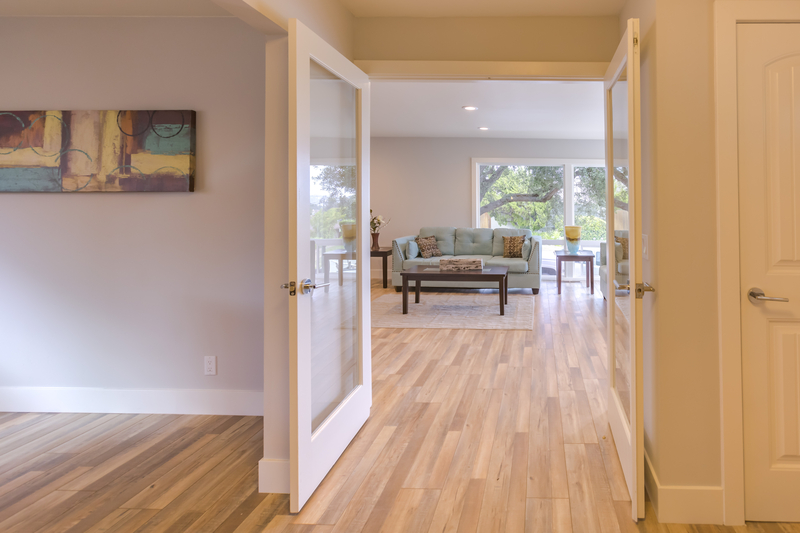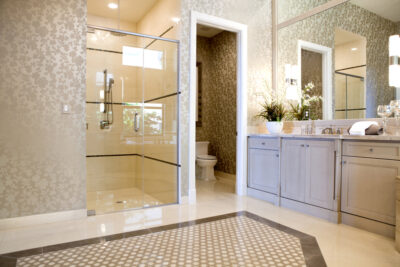
Spring is the season of fresh starts—and the perfect time to tackle home renovations. This year, consider projects that not only enhance your home’s value but also help you live there comfortably for years to come.
The demand for accessible homes is rising. These homes provide comfort, safety, and ease of use for people of all abilities—but they’re in short supply. With so few homes on the market that meet these needs, many homeowners are choosing to upgrade their current spaces to age in place.
The good news? Modern accessibility features are both functional and stylish, making them a smart investment for any homeowner.
Future-proofing your home in 2025
The housing market has been tough to navigate (to say the least), and some generations have had enough. Over half of boomers have pledged to never sell their homes, with Gen X also planning to live in their homes until it’s necessary to leave.
As more people choose to stay in their homes longer, adaptive living has emerged as one of Forbes’ top design trends for 2025.
“Aging in place is no longer an afterthought—it’s an integral part of the conversation,” says Kerrie Kelly, a distinguished interior designer, in an interview with the outlet.
With so many people set on living in their homes for the long haul, future-proofing is an investment that most homeowners can’t afford to not make.
Aging in place in your home
Consider this: When buying a home, the top reasons cited by buyers were more outdoor space, more square footage, and a quieter area, respectively. Nowhere on that list were considerations for aging.
Part of that reason might be scarcity. Only about 10% of homes nationwide are fully prepared for senior living, according to research from AARP.
These homes are defined as having a step-free entryway, a bedroom with a full bathroom on the first floor, and at least one bathroom accessibility feature such as handrails or grab bars.
“I find myself incorporating these features more and more,” says Megan Behrens, the founder and principal designer of Meg Behrens Design. “Not just for aging homeowners or ADA compliance, but because they truly enhance comfort, functionality, and even resale value for everyone.”
Future-proof projects that pay off
Investing in universal design features can have a strong return on investment.
“Homes with universal design elements appeal to a broader audience, including multigenerational families and retirees looking to age in place,” says Behrens.
She estimates that these upgrades can boost a home’s resale value by 5% to 10%, thanks to their enhanced marketability and functionality.
But as with all home improvements, your ROI will depend on investing in the right projects. Here are the top upgrades that can make your home more accessible while maximizing its value.

Anthony Aneese Totah Jr
Install a zero-entry shower
Also called a curbless shower, this shower has no threshold, making it accessible for people with limited mobility—including the elderly and children. They’re also a beautiful focal point for any water closet.
Don’t forget a handheld showerhead, says Behrens. Built-in seating can also add function with a touch of elegance.
The best part? Remodeling a bathroom can bring in up to 70% return on investment and boost a listing price by as much as 3%. That’s a big bang for your buck.
Add an entry ramp
Step-free entryways are essential for aging in place. Seamlessly integrated ramps improve both accessibility and home value. Temporary ramps might offer accessibility but won’t increase equity.
Upgrade lighting
Mood lighting might look great with the acuity of youth, but as we age, our eyes need brighter light.
Adding extra lighting throughout your home can help make food preparation easier in the kitchen or bedtime reading more enjoyable. This simple change can make huge improvements in accessibility and quality of life.
Invest in smart tech
Accessible technology can also double as energy-efficient upgrades, says Behren. She recommends adding motion-sensor lighting, smart thermostats, and automated window treatments to reduce energy waste and lower utility bills.
Widen your doorways
If your doorways are narrower than 36 inches, consider adding a little extra space. Standard doorways can be too narrow for mobility aids like wheelchairs or walkers. Widening the opening can make navigating the house easier while also opening up your home.
It can also have a value-boosting effect. Features like accessible doorways increased property values by over $30,000 in the Dallas-Fort Worth area, according to research from Orchard.
Expand your parking spot
Here’s an area of your home you’ve likely neglected: your parking spot.
Squeezing past your ski gear and your side-view mirrors might work for right now, but it won’t cut it in the long haul.
To make your parking space accessible, you’ll need a spot that’s at least 96 inches wide, with minimal slope, and close to an entry point to your home.
Planning for future-proofing
“Universal design makes a home more functional, inclusive, and adaptable for all stages of life,” says Behren. “Instead of feeling like a space is designed for a specific age or ability level, it seamlessly blends accessibility with modern aesthetics.”
Whether you’re planning for your own future needs or increasing your home’s marketability, these thoughtful upgrades offer long-term benefits that go beyond ROI.
Future-proofing your home is more than a practical choice—it’s an investment in both your quality of life and your home’s lasting value.
Allaire Conte, Realtor.com

